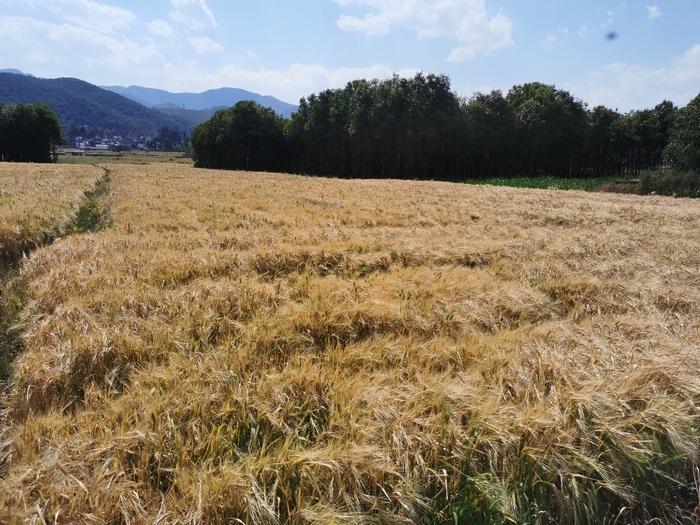Reviewed by Alex SmithMay 18 2022
Southwestern China (SWC) is a region on the southeastern side of the Tibetan Plateau. Here, both southwesterly and southeasterly winds tend to impact weather patterns at the time of the summer monsoon period.
 Crops were not fully filled, and the rate of empty straw greatly increased in Weishan County, Yunnan province, China under drought conditions. Photo taken on April 21st, 2021 by Yong Zhu of Yunnan Meteorological Administration. Image Credit: Yong Zhu
Crops were not fully filled, and the rate of empty straw greatly increased in Weishan County, Yunnan province, China under drought conditions. Photo taken on April 21st, 2021 by Yong Zhu of Yunnan Meteorological Administration. Image Credit: Yong Zhu
Prior to the start of the summer rainy season, spring drought is common throughout SWC, thereby posing a risk to local agriculture, ecology and economic balance.
SWC faced extreme drought as a result of the integrated impacts of high evaporation and deficient precipitation during the spring of 2021. To identify the meteorological mechanisms behind this harsh season, international collaborators from famous universities and research centers studied this extreme drought event.
They discovered that climatic conditions at the time of the extreme 2021 spring drought across SWC were diverse from similar historical events. Scientists reported their complete analysis in the journal Advances in Atmospheric Sciences.
This drought occurred in the decaying phase of a La Niña event with negative geopotential height anomalies over the Philippine Sea, which is distinct from the historical perspective. Historically, spring drought over SWC is often linked to El Niño and strong western North Pacific subtropical high.
Dr. Yunyun Liu, Study Lead Author, China Meteorological Administration
Liu and her collaborators displayed that the extreme drought in the spring of 2021 might be amplified by the warming trend and driven by the atmospheric internal variability.
Raised evaporation as a result of the anomalously high temperatures also contributed to nearly 30% of what made the drought so severe, with the contributions of its linear trend portion being almost 20%, and the interannual variability portion being nearly 10%.
Since the sea surface temperature forcing from the tropical central and eastern Pacific played a minor role in the drought, it was challenging for a climate model to capture the 2021 SWC drought beyond one-month lead times.
Dr. Zeng-Zhen Hu, Researcher, National Centers for Environmental Prediction, National Oceanic and Atmospheric Administration
Hu added, “Nevertheless, this study demonstrated a significant global climate warming impact on regional climate extreme events. Such an impact might be intertwined with complex ocean-land-atmosphere interactions.”
This study implies that a nonlinear relationship might prevail between the tropical Pacific SST and SWC drought anomalies. Both El Niño and La Niña events can result in drought in SWC via several mechanisms. The research group suggests additional investigation via diagnosis and model experiments.
Journal Reference:
Liu, Y., et al. (2022) Causes and Predictability of the 2021 Spring Southwestern China Severe Drought. Advances in Atmospheric Sciences. doi.org/10.1007/s00376-022-1428-4.